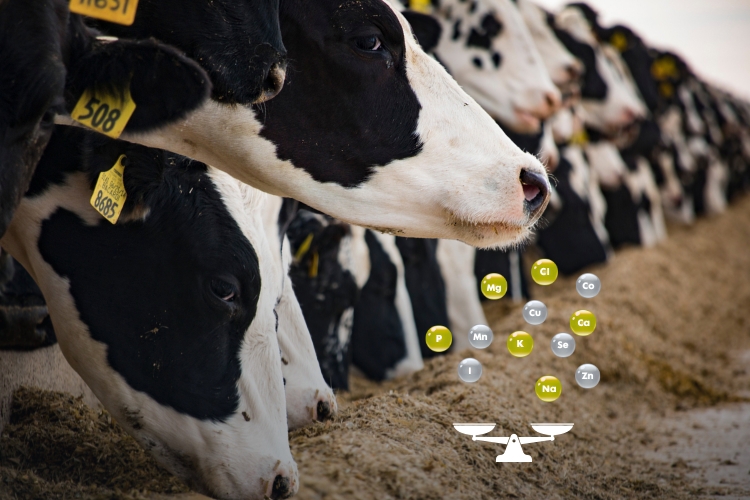Minerals in balance: when less is more
Catalin Necula, DVM, PhD, Technical Sales Manager, Ruminants, Trouw Nutrition ECA
- Sustainable precision farming
Trace minerals like copper, zinc and manganese play a critical role in maintaining the health, productivity, and reproductive success of dairy cows. They support immune defenses, enzyme function, and overall herd performance. For years, nutrition strategies focused on avoiding deficiencies, often with a cautious eye on mineral interactions that could hinder absorption. This conservative mindset, combined with the high tolerance levels, has led to widespread over-supplementation, far beyond what cows truly need.
Today, evidence shows that overfeeding, rather than underfeeding, has become the more common challenge in dairy nutrition.

From Deficiency Concerns to Oversupply
Historically, underfeeding trace minerals was the central concern. The risk of deficiency seemed more immediate, and industry often responded by formulating diets with generous safety margins. Antagonist fears, such as the impact of high dietary iron or sulfur interfering with copper or zinc absorption, further encouraged excessive supplementation.
However, modern studies highlight that dairy cows are frequently supplied with levels well above physiological requirements. For example, a survey of 139 herds in California and eastern Canada found that copper concentrations in lactating cow diets exceeded the NASEM guideline of 10 ppm by 70–80%. While acute copper toxicity is rare, long-term oversupply can lead to dangerous liver accumulation that pushes animals closer to chronic toxicity..
The Hidden Cost of Mineral Overload
Oversupplying minerals is often invisible in day-to-day herd management.. Much like subclinical hypocalcemia, mineral overload produces subtle, non-specific symptoms that undermine performance and reproduction. In Michigan, nearly half of the liver samples tested exceeded the safe threshold of 500 ppm, and 12% were above 850 ppm DM. Similar patterns have been reported in the Netherlands and the UK, where chronic copper accumulation is widespread among cull cows.
The consequences are significant. Elevated liver copper levels have been linked to lower conception rates and a greater number of inseminations per pregnancy, which directly affects farm profitability. Beyond animal health, the environmental implications are also concerning. Excess minerals are excreted in manure and urine, leading to their accumulation in soil and water systems. This can disrupt soil balance, affect microbial communities, and contribute to environmental degradation over time. Economically, over-supplementation represents unnecessary feed cost with no benefit in productivity.
Towards Balanced Mineral Nutrition
Recent works by Daniel et al. provides further clarity on why chronic oversupply has become widespread. Their review shows that cattle possess greater resilience to shortfalls than previously thought, thanks to homeostatic upregulation of absorption under low supply. In contrast, when dietary intake is high, especially in lactating cows with large dry matter intakes, these same homeostatic mechanisms are insufficient to prevent unregulated mineral retention. These insights underscore the importance of replacing outdated safety margins with precision strategies that respect both the lower and upper boundaries of mineral nutrition.
As the industry moves toward greater sustainability and efficiency, nutritionists and farmers must shift from “insurance feeding” to precision supplementation. Meeting but not exceeding requirements is key to unlocking long-term productivity and safeguarding both economic and environmental outcomes.
Conclusion
Trace minerals remain vital to sustaining the health and productivity of dairy cows. However, the long-standing fear of underfeeding has created a new problem: chronic over-supplementation. The industry now has the scientific tools and insights to strike a balance, protecting animal health, safeguarding the environment, and supporting farm profitability. Precision mineral nutrition guided by updated research and modelling tools is the future of trace mineral nutrition in dairy herds.